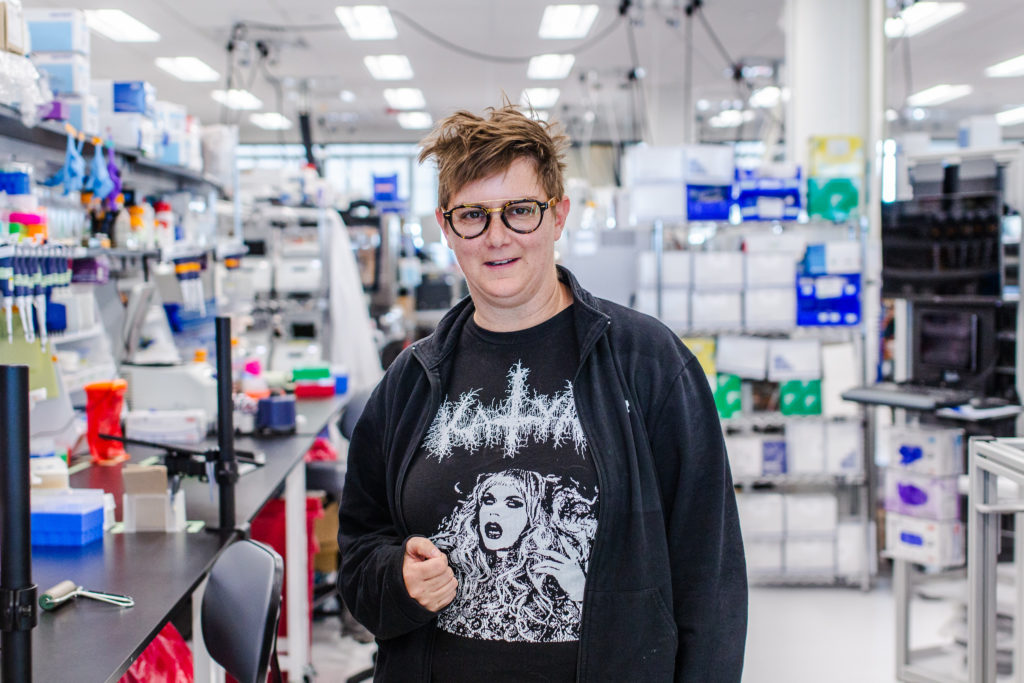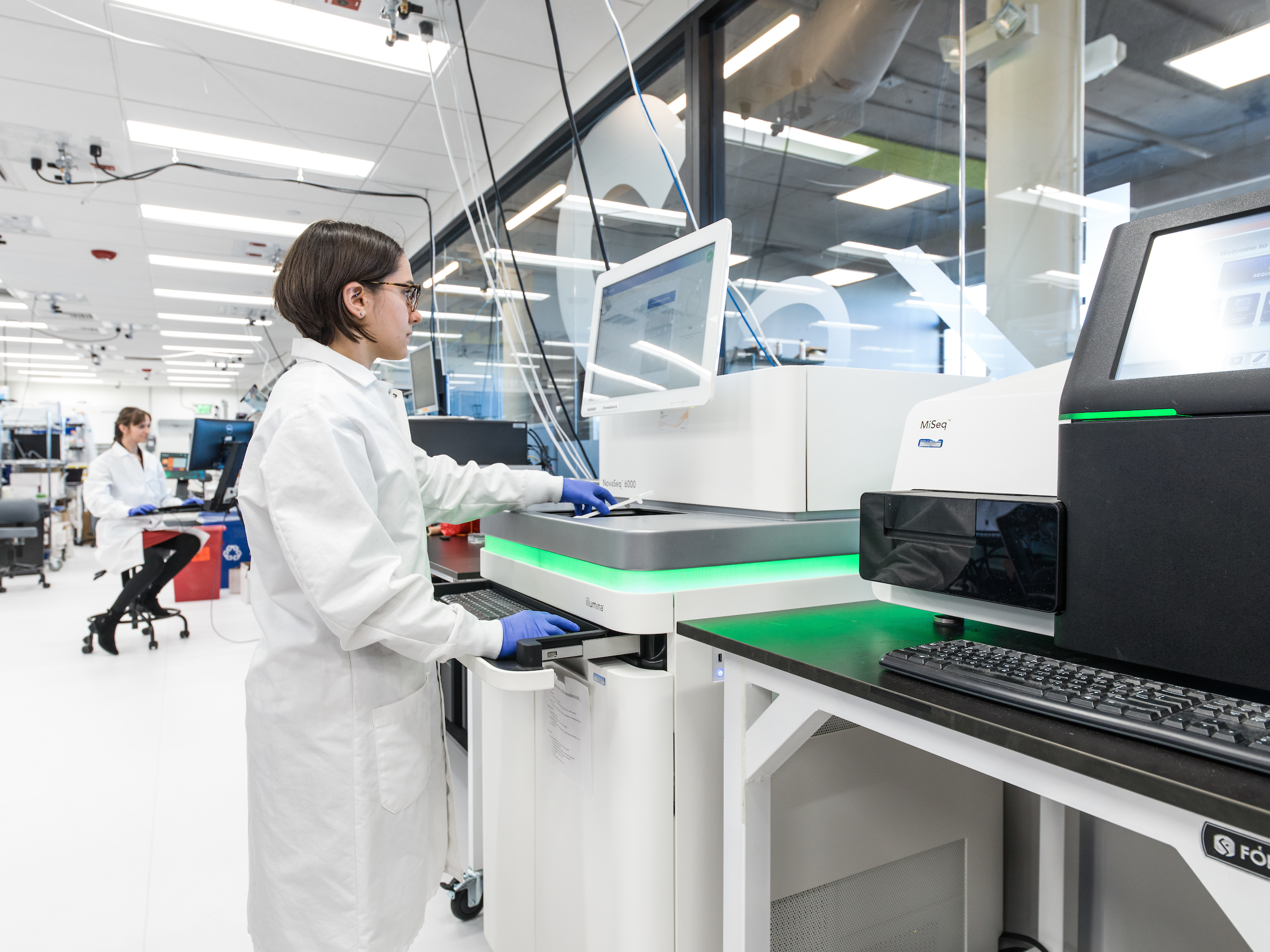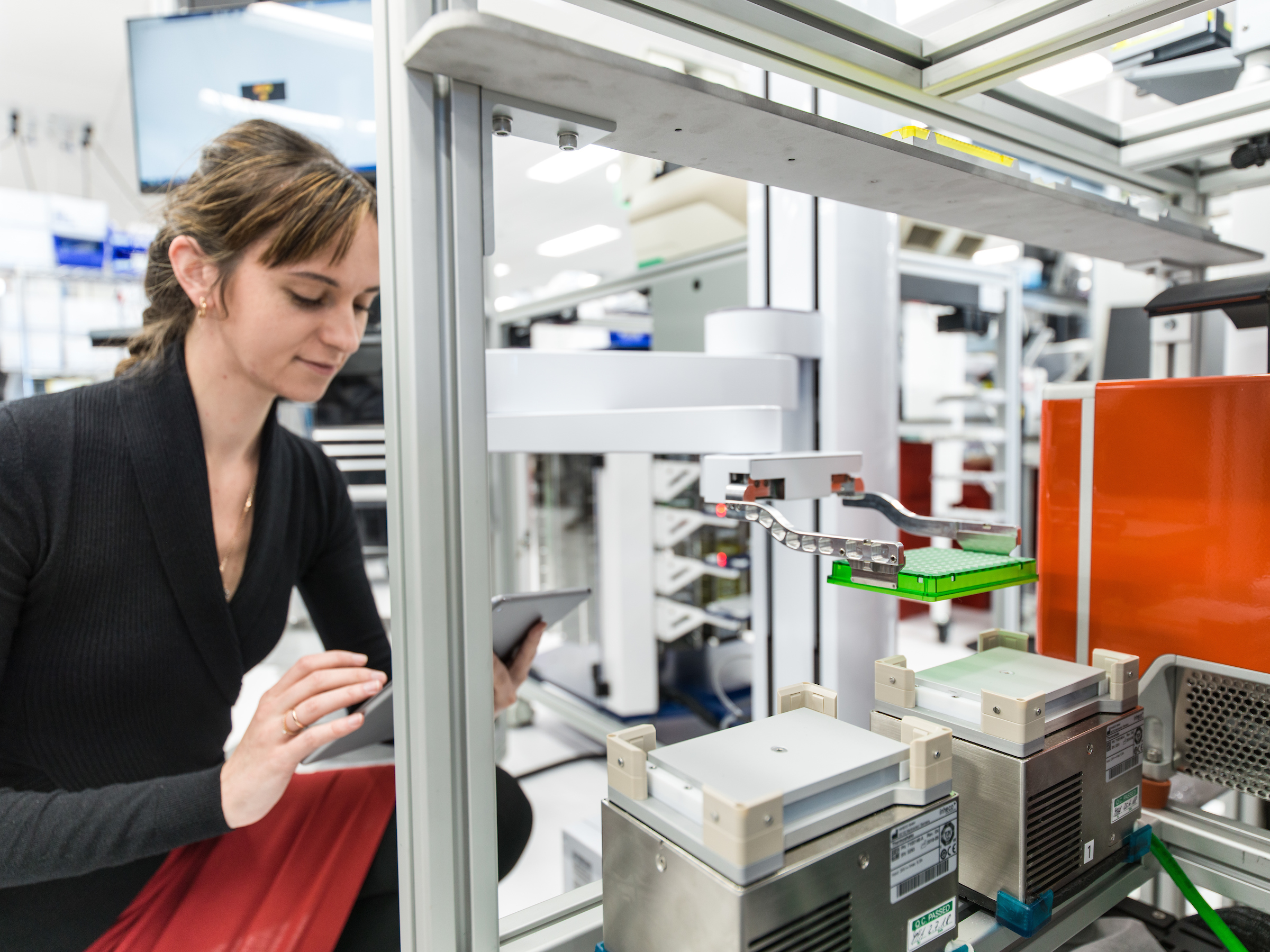
Today, in our series exploring the day-to-day lives and interests of Ginkgo employees, we talk with Dawn Thompson, Head of Next Generation Sequencing and Senior Biological Engineer at Ginkgo.
How did you become involved in your industry? Tell us a little bit about your background and the path that brought you to Ginkgo.
I’m a biologist primarily because I love understanding how things work. I’m a geneticist, with the bulk of my training in genomics. The most exciting thing about genomics to me is understanding how the DNA in your genome gets translated into particular characteristics, and how the contents of your genome can be decoded to determine what makes you, you. Of course, people are really complicated, from a DNA perspective, so the simplest way to practice genomics is to look at a simple organism. That’s why I decided to focus on microbial biology. Microbes are fascinating; they live everywhere on the planet — glaciers, volcanoes, even on us — and they do all these fantastic things.
When I was just starting out as a geneticist in graduate school, I was studying one gene at a time, but I knew to really work in genomics I would need to understand entire genomes. I joined the Broad Institute, an arm of MIT and Harvard that was launched in 2004 to improve human health using genomics, and worked there for 9 years studying genomes and their characteristics.
I loved my time at the Broad Institute, but every 10 years or so, I like to look at my career and think: What other cool stuff is there to learn in biology that I haven’t explored yet? To me, synthetic biology was the obvious next step. Synthesizing DNA was getting cheaper, as was sequencing, meaning we could now both “write” (synthesize) and read (sequence) genes in a cheap, high-throughput way. That opened up all kinds of ways to use synthetic biology to understand the functions of cells and program them to serve new functions.
Ginkgo Bioworks was the perfect opportunity to explore synthetic biology and combine my interest in microbes, my expertise in evolution and genomics, and my passion for understanding how things work on a biological level. This August, I’ll be celebrating three years there, leading out next generation sequencing team.
Tell us a little about your role – what’s the high-level impact you have on Ginkgo?
Ginkgo is divided into two primary departments, foundry teams and customer-facing teams, and as part of my role as a senior biological engineer I’m involved in both sides of the business.
My primary responsibilities are on the foundry side, providing services and support for internal Ginkgo teams and helping our organism engineers determine which of our organism designs are working the best. To do this, my team and I leverage Ginkgo’s next generation sequencing platform (which I played a primary role in creating), allowing the organism engineers to sequence the constructs they use in their organism engineering and sequencing those organisms so that the engineering teams can understand their genomic sequence and ultimately design them.
My team is about 10 people right now, a mix of scientists handling the gene sequencing and bio-mathematicians who can analyze the resulting data.

When Ginkgo takes on a new project, we often have a new microbe that we want to work in. My team is one of the first steps in that process. We call it “onboarding a new host organism.” Typically, we can design something on the computer and understand what the sequence will be. But in order to do that, you need to first understand the full genomic sequence of an organism. So for new host organisms we’ll do a custom project where we do several types of sequencing, a lot of computational analysis and then generate what’s called the “reference genome” for them. It’s a really collaborative process.
A real benefit Ginkgo — and our team specifically — offers to our internal engineers is that, because of our next generation mix of automation, we can do all of this in high throughput work cheaply and quickly, speeding up the overall engineering cycle and get answers fast.

What’s most exciting to you about the work Ginkgo is doing right now?
Our new agtech company Joyn is super cool. About 15 years ago I was trying to figure out my career, and was fascinated by the idea of going out in the field to sequence organisms in the oceans and soil. Now that’s actually some of the work we’re doing with Joyn as we try to figure out how to engineer a microbe that can live in the soil and help plants grow, replacing nitrogen fertilizer with a more “green” process.
Our tagline is, we’re trying to make biology easier to engineer. In order to do that, we need to understand biology better — and identify the common themes and designs that will help speed up our process.
That will allow us to replace a really labor-intensive, expensive, resource-demanding process with something very green. You can make a lot of stuff both cheaply, and not use a lot of resources that create problems with waste that you need to dispose of. Biomanufacturing is a very cool green process.
Mother nature is the best engineer! If we source all the biodiversity in nature and understand what’s in the genomes in those organisms, it opens up a wide range of functionality. Ginkgo is well on its way to demonstrate that this is a technology that is not only here to stay but can be leveraged to create anything — to make textiles, to replace plastics. If we do it right, we don’t need petroleum based plastics anymore!

What do you love most about your job?
It’s hard to pick just one thing, but one of the things I love the most about my work at Ginkgo is that we are using state-of-the art methods to interrogate so many aspects of cellular function. Our sophisticated automation allows us to do this at scale, taking a holistic approach to organism engineering. This is a powerful and versatile way to create organisms for our customers; the resources at Ginkgo allows us to interrogate biology in a way we haven’t be able to previously. We can understand biology on an entirely new level and in turn identify common themes or design principles that can be then be used for a wide variety of applications. It’s almost limitless.
